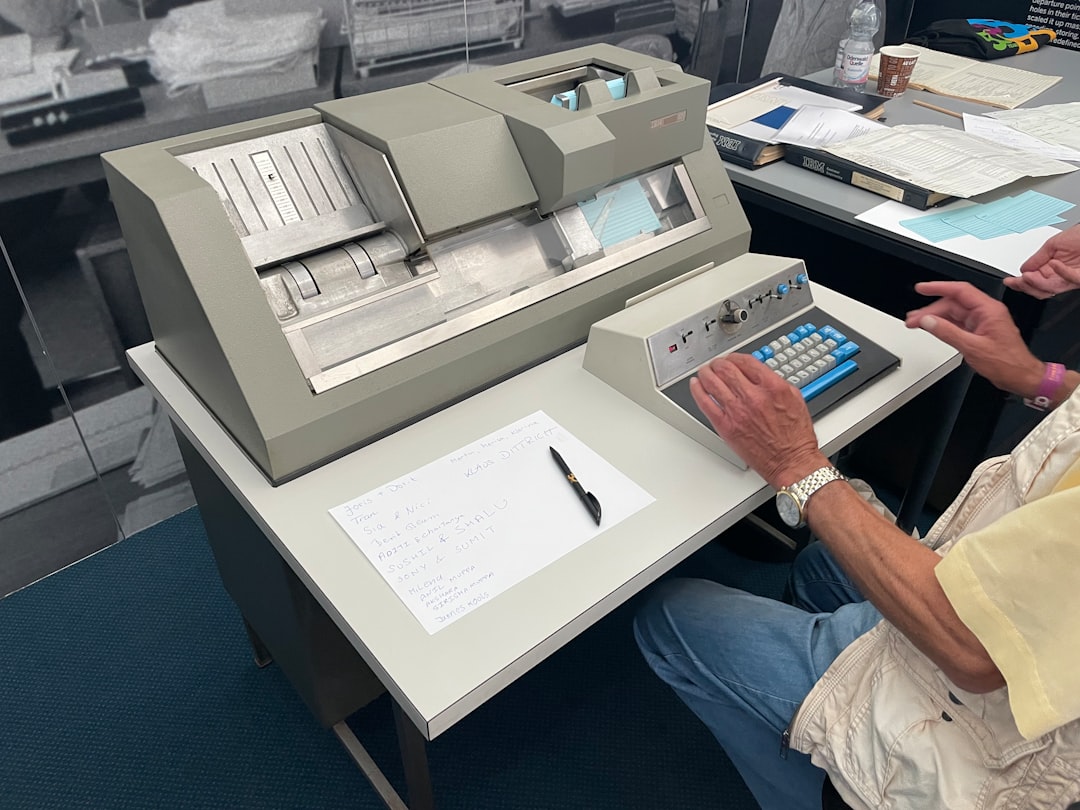Becoming a transcriptionist can be a rewarding career choice, offering flexibility, variety, and the chance to work from virtually anywhere. Whether you’re considering general transcription, legal transcription, or medical transcription, this guide will provide you with everything you need to know to get started.
In this article, we’ll explore the skills required, tools and resources available, and steps to begin your journey as a transcriptionist. We’ll also touch on specialized fields like medical transcription, providing tips and insights to help you succeed in this in-demand profession.

A transcriptionist is someone who converts audio recordings into written text. This task can range from transcribing interviews and speeches to documenting legal proceedings and medical dictations. Each type of transcription presents its own challenges and nuances, requiring specialized skills and attention.
Types of Transcription
Transcription is not a one-size-fits-all profession. It includes general transcription, where you might handle a range of topics, and specialized fields such as legal and medical transcription, which require a deeper understanding of specific terminologies and protocols. Understanding the different types helps you choose where to focus your efforts and tailor your skills accordingly.
Skills and Qualities Needed
Transcriptionists must have excellent listening skills, fast and accurate typing abilities, and a strong command of grammar and punctuation. These skills ensure the text accurately reflects the audio content. Additionally, qualities like patience, concentration, and the ability to work independently are crucial.
The Role of Technology
Technology plays a significant role in transcription. Transcriptionists use various software tools to enhance accuracy and efficiency. Familiarizing yourself with these tools can streamline your workflow and open up more job opportunities.
Essential Transcription Skills
To become a successful transcriptionist, you’ll need to develop the following skills:
Listening Skills
Being able to accurately understand and interpret audio is crucial. This includes distinguishing between different speakers, understanding various accents, and picking up on nuances in speech.
- Understanding Accents and Dialects: Exposure to different accents can be challenging but rewarding. It requires practice and exposure to diverse audio content to become proficient.
- Distinguishing Speakers: In multi-speaker settings, identifying and differentiating speakers is essential for an accurate transcript. This skill ensures clarity in the final text.
- Recognizing Speech Patterns: Understanding colloquialisms and speech patterns helps in maintaining the natural flow of conversation in the transcript.
Typing Speed and Accuracy
Most transcription jobs require a minimum typing speed of around 60 words per minute. Accuracy is equally important, as errors can change the meaning of the transcription.
- Improving Typing Speed: Regular practice with typing tests and exercises can help improve speed. Setting speed goals and tracking progress encourages improvement.
- Ensuring Accuracy: Accuracy is vital to maintain the integrity of the transcript. Practicing with different types of audio can enhance this skill.
- Balancing Speed and Accuracy: Striking a balance between speed and accuracy is crucial. Prioritizing clarity and correctness ensures high-quality work.
Language Proficiency
A strong grasp of grammar, punctuation, and spelling is essential. Clients expect clean and polished transcripts.
- Grammar and Syntax: Understanding complex grammatical rules and syntax helps in producing coherent transcripts. This skill requires ongoing learning and practice.
- Punctuation Importance: Proper punctuation guides readers and ensures the transcript’s intended meaning is preserved. Small errors can lead to misunderstandings.
- Enhancing Vocabulary: A rich vocabulary allows transcriptionists to accurately capture spoken words. Reading widely and learning new terms regularly is beneficial.
Attention to Detail
Transcriptionists need to pay close attention to details to ensure accuracy, especially in specialized fields like medical or legal transcription.
- Error Detection: Transcriptionists must be adept at catching errors during proofreading. This skill involves meticulous attention and patience.
- Consistency in Transcripts: Maintaining consistency in terminology and formatting is crucial for professionalism. Developing templates and style guides can help.
- Specialized Terminology: In fields like medical transcription, understanding complex terminology is critical. Continuous learning in the chosen field is necessary.
Transcription Tools and Resources
 Transcription Software
Transcription Software
Transcription software can make your job easier by allowing you to control audio playback speed, use foot pedals, and insert timestamps. Popular options include Express Scribe, oTranscribe, and Descript.
- Software Features: Many transcription programs offer features like text expansion and voice recognition. These can greatly increase productivity and accuracy.
- Choosing the Right Software: Selecting software that fits your needs and budget is important. Consider trying free trials to find the best fit.
- Integration with Other Tools: Some software can integrate with other tools, allowing for streamlined workflow and enhanced functionality.
Headphones
A good pair of headphones can help you hear audio more clearly, especially if background noise is present. Look for noise-canceling models designed for professional use.
- Noise-Canceling Benefits: Noise-canceling headphones can significantly improve focus and accuracy. They reduce distractions and enhance audio clarity.
- Comfort Considerations: Comfort is key when selecting headphones for long periods of use. Lightweight models with adjustable bands are ideal.
- Audio Quality: High-quality sound is crucial for picking up subtle audio details. Investing in a good pair of headphones is a worthwhile investment.
Foot Pedals
Foot pedals allow you to control audio playback without taking your hands off the keyboard. This can significantly improve your transcription speed.
- Enhancing Workflow: Foot pedals enable smoother control over audio playback. This feature allows transcriptionists to maintain typing speed without interruptions.
- Types of Pedals: There are various pedal models, each with different functionalities. Choosing the right one can enhance productivity.
- Learning to Use Foot Pedals: Getting accustomed to foot pedals might take time. Practice can help you utilize them effectively.
Online Courses and Guides
Numerous online courses and guides can help you hone your transcription skills. Websites like Udemy and Coursera offer training specifically for transcriptionists, covering everything from basic skills to specialized fields.
- Course Content: Courses often cover essential skills like typing, grammar, and specialized terminology. Selecting comprehensive courses ensures a well-rounded learning experience.
- Free vs. Paid Courses: Both free and paid courses have benefits. Free courses can offer a good introduction, while paid ones often provide deeper insights and certifications.
- Community and Support: Online courses often come with community support. Engaging with peers and instructors can enhance learning and provide networking opportunities.
Steps to Becoming a Transcriptionist
1. Learn the Basics
Begin by familiarizing yourself with the transcription process. Practice transcribing different types of audio and use transcription software to improve your efficiency.
- Understanding the Transcription Process: Familiarity with the overall process is crucial. This includes listening, typing, and editing.
- Practicing with Varied Audio: Starting with diverse audio types helps develop a broad skill set. It prepares you for different transcription scenarios.
- Utilizing Software Tools: Software tools can make the process more efficient. Getting comfortable with these tools early on is beneficial.
2. Choose a Specialty
You may choose to specialize in a specific field, such as legal or medical transcription. These fields often require additional training and certification but can offer higher pay.
- Exploring Different Specialties: Research different transcription fields to find what interests you. Consider the demands and rewards of each specialty.
- Benefits of Specializing: Specialization can lead to higher pay and more job opportunities. It can also enhance job satisfaction by aligning with personal interests.
- Training and Certification Requirements: Specialized fields may require additional training. Researching certification options can guide your career path.
3. Build Your Skills
Continue to improve your typing speed, listening skills, and language proficiency. Consider taking online courses or workshops to enhance your knowledge.
- Setting Skill Improvement Goals: Regularly set and review goals for skill enhancement. This keeps you focused and motivated.
- Engaging in Continuous Learning: The transcription field is dynamic. Staying updated with new techniques and tools is essential.
- Skill-Specific Workshops: Workshops offer hands-on experience and focused learning. They can address specific challenges you face.
4. Gain Experience
Start with freelance transcription jobs to gain experience and build a portfolio. Websites like Upwork, Fiverr, and Rev are excellent platforms for finding transcription work.
- Portfolio Development: A strong portfolio showcases your skills and attracts clients. It should include varied samples of your work.
- Freelancing Platforms: Online platforms provide access to a wide range of transcription jobs. They are a great place to start building your career.
- Networking and Building Client Relationships: Building relationships with clients can lead to repeat work and referrals. Networking within the industry is equally important.
5. Obtain Certification
While not always required, certification can enhance your credibility and open up more job opportunities. The Association for Healthcare Documentation Integrity (AHDI) offers certification for medical transcriptionists.
- Understanding Certification Benefits: Certification can validate your skills and knowledge. It often leads to better job prospects and higher pay.
- Certification Options: Research different certification programs and choose one that aligns with your career goals.
- Preparing for Certification Exams: Preparing for exams requires study and practice. Utilizing study guides and practice tests can aid in preparation.
Specializing in Medical Transcription

Medical transcription is a specialized field that requires additional knowledge and training. Medical transcriptionists convert doctors’ dictations into written reports, which become part of a patient’s medical record.
Training and Certification
Becoming a medical transcriptionist often requires completing a certification program or obtaining an associate’s degree. These programs teach medical terminology, anatomy, and legal issues related to healthcare documentation.
- Understanding Medical Terminology: Knowledge of medical terminology is crucial. It ensures accuracy in transcribing medical reports.
- Importance of Anatomy and Physiology: Understanding human anatomy and physiology aids in accurate transcription. It is fundamental to medical transcription.
- Legal and Ethical Considerations: Healthcare documentation involves legal and ethical responsibilities. Training covers these crucial aspects.
Study Guides and Resources
Several study guides and resources are available to help you prepare for a career in medical transcription. The “Certified Medical Transcriptionist Exam Secrets Study Guide” and “Medical Transcriptionist Guide to Orthopedic Tests” are valuable resources.
- Choosing Study Guides: Select guides that offer comprehensive coverage of exam content. Reviews and recommendations can guide your choice.
- Utilizing Online Resources: Online resources offer flexible study options. They often include practice exams and interactive content.
- Balancing Study and Practice: Combining study with practical exercises enhances learning. It prepares you for real-world transcription tasks.
Practice Dictation
Practice is essential for success in medical transcription. Use practice dictation exercises to hone your skills in interpreting and transcribing complex medical terminology.
- Regular Practice Sessions: Schedule regular practice sessions to maintain and improve skills. Consistency is key to mastery.
- Simulating Real-World Scenarios: Practice with real-world dictation scenarios. This prepares you for the types of tasks you’ll encounter professionally.
- Feedback and Improvement: Seek feedback on your practice work. Use it to identify areas for improvement and refine your skills.
Transcriptionist Tips for Success
1. Stay Organized
Keep your files organized and maintain a system for managing your workload. This will help you stay on top of deadlines and ensure that you deliver quality work.
- File Management Systems: Implement a system for organizing files. This ensures easy retrieval and prevents loss of important documents.
- Scheduling and Prioritization: Effective scheduling helps manage multiple deadlines. Prioritizing tasks ensures timely completion of work.
- Using Productivity Tools: Utilize tools like calendars and task managers. They can streamline workload management and enhance productivity.
2. Invest in Quality Equipment
Investing in high-quality headphones, a reliable computer, and transcription software can significantly improve your efficiency and the quality of your work.
- Upgrading Equipment: Regularly assess your equipment needs. Upgrades can enhance performance and reduce technical issues.
- Choosing Reliable Brands: Invest in reputable brands for reliability. Reviews and recommendations can guide your purchasing decisions.
- Regular Maintenance: Maintain your equipment regularly to ensure longevity. This includes software updates and hardware checks.
3. Proofread Your Work
Always proofread your transcripts before submitting them to clients. This ensures that your work is accurate and free from errors.
- Proofreading Techniques: Develop a systematic approach to proofreading. This ensures thorough review and error detection.
- Using Editing Tools: Utilize editing tools to assist with proofreading. They can catch errors you might miss manually.
- Peer Reviews: Consider peer reviews for additional insights. Fresh eyes can often spot errors you might overlook.
4. Stay Updated
Stay updated on industry trends, tools, and techniques. Joining transcriptionist forums and online communities can provide valuable insights and support.
- Industry News and Trends: Subscribe to industry publications and follow relevant blogs. This keeps you informed of changes and advancements.
- Joining Professional Communities: Engage with professional communities for networking and support. Sharing experiences and advice enhances learning.
- Continuous Learning: Commit to continuous learning through courses and workshops. Staying updated ensures your skills remain relevant.
Conclusion
Becoming a transcriptionist is a rewarding career that offers flexibility and the opportunity to work in various fields. By developing the necessary skills, investing in the right tools, and gaining experience, you can build a successful career as a transcriptionist. Whether you choose to specialize in medical transcription or pursue general transcription work, there are numerous resources available to help you succeed in this dynamic and growing field.
With dedication and practice, you’ll be well on your way to becoming a proficient and sought-after transcriptionist. Embrace the learning journey, and soon you’ll be turning audio into text with ease and precision.


